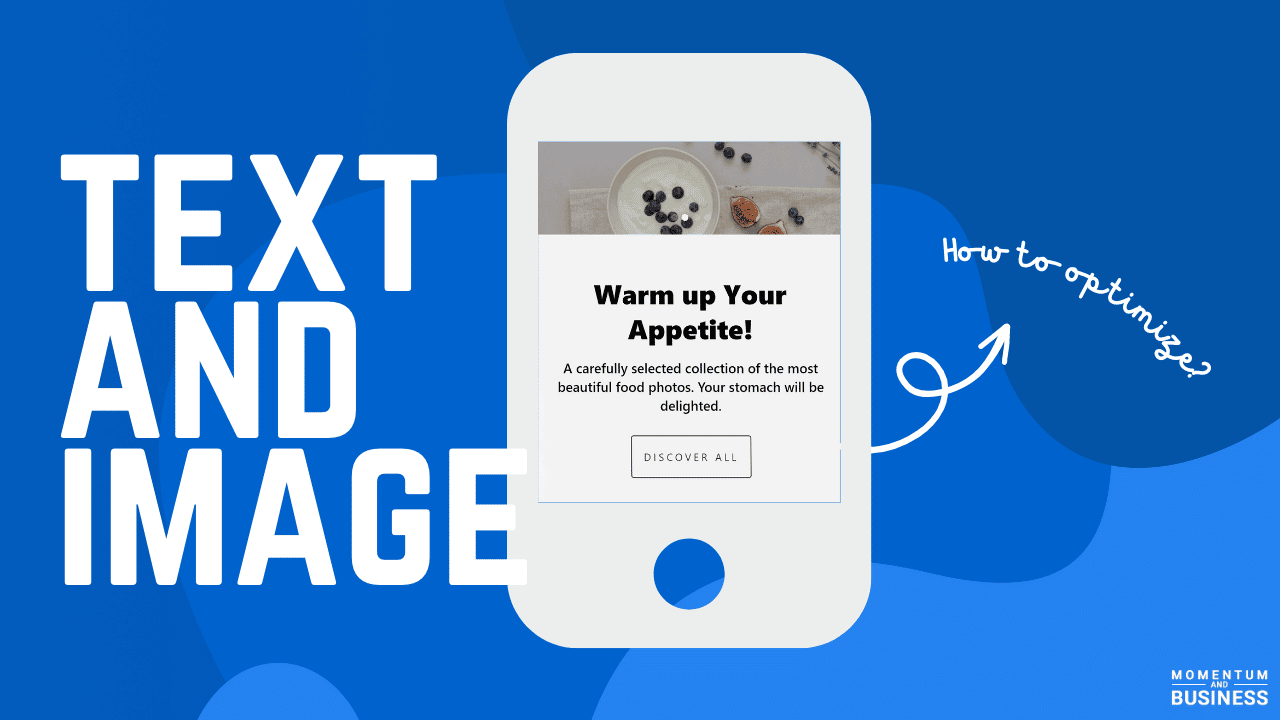Images are now a necessity to include in any email marketing campaign, and they can, in fact, bolster and improve CTAs generating more revenue for your business. But many questions need to be answered like how much text you should use and how you optimize the ratio of text and images. Let's discuss this.
To optimize your text-to-image ratio, you will need to implement the 60/40 rule, where 60% of the email should constitute text and 40% images. Then, you will need to optimize images making them double the placeholder's size, use the correct file format, and use alt text.
This article will outline and then detail the core principles you will need to understand to optimize your text-to-image ratio. If you want to improve your marketing campaigns and know little about preferred methods, read on because this article is for you.
How to Optimize Text-to-Image Ratio in Your Campaigns

Considering that between 25% and 35% of total company revenue should come from email marketing, and a return of $36 can be expected for every $1 spent, it is important to understand how to optimize every marketing campaign sent to clients and customers.
There are two main considerations that you will need to account for in order to optimize the text-to-image ratio in your campaigns. These two aspects are:
Take note that additional factors will fall under these two aspects, but understanding these will allow you to always optimize your text-to-image ratio no matter the campaign in question.
1. The 60/40 Text-to-Image Ratio Rule
The preferred rule of thumb is that you should always try to implement approximately a 60/40 ratio with regard to text and images in your marketing campaigns. That is to say; an email should comprise of 60% text and have an image coverage of about 40%.
SpamAssassin also indicates that an email should have about 400 characters of text, but we will look at how much text you should place in your emails next. (Related: How to Keep Your Marketing Emails Out of the Spam Box)
It will help to understand that your customers and potential clients get bombarded with emails all day long, and as we now know what percentages of emails are actually opened, the ideal scenario would be that an email is short, to the point, and includes relevant and stunning graphics (images) that prompt a CTA.
Email Word Count for Email Marketing Campaigns
Data and statistics show that even the best possible word count that an outgoing marketing campaign should have is between 50 to 125 words. Now, this might seem like not a lot to get your message across; however, if you have implemented the suggested 60/40 ratio, included stunning graphics, and good CTAs, you have done your job correctly.
Moreover, the data shows that brief copies perform better with emails having a word count of between 25 and 50 words resulting in CTAs exceeding 50%.
If you consider that the average open email rate is approximately 21.5% across most industries, according to the Email Marketing Benchmarks Report, then having 50% of that percentage prompting a CTA could be very beneficial for your business.
2. Choosing the Correct Image Size for Emails
Now that you understand how much text to place in relation to images, it would be best to understand how to optimize the actual images you place in your emails. You will probably be using some form of email marketing automation platform, such as MailChimp or Constant Contact (If you don't, you can always get free email templates that you can edit by searching on Google).
In doing so, you will usually create your email through a template, providing you with image placeholders with specific dimensions. The dimensions for the placeholders will change depending on the layout you choose, but the typical width of most email marketing templates will be 600 pixels in total.
Rule of thumb: You will want to make the image double the size of the placeholders that they will replace. This means that they will always look crystal clear. Images this size will also translate better to high-definition displays that include Retina and 4K.
Thus you should try to optimize your images to have a width (in general) of no less than 1200 pixels.
Image Formats for Emails
Considering that your email marketing campaigns should comprise a 40% ratio of images, it would be best to "compress" or make those images as small as possible. This does not mean small images (because we already discussed how large they should be), this type of "small" refers to the images' file size.
There are three formats that you can consider:
Things to Consider when Adding Images to Emails
We have now covered the best ways to optimize your text-to-image ratio when you are compiling your email marketing campaigns for your customers. It will help if you remember that these rules can be applied to any business form and marketing strategy, and they will always apply.
However, there are some other factors you will also want to account for because even though images are now placed in pretty much all marketing campaigns, there are potential roadblocks that you will need to deal with on occasion.
Final Thoughts
We discovered that there are two factors to consider when trying to optimize text-to-image ratios in email marketing: the 60/40 rule and choosing the correct image size. These are the most important factors because they will give you a general understanding of how to compile all your marketing campaigns, no matter what they are.
In general, a marketing email should be between 50 and 125 words (about 400 characters), and the ratio of images to text is 40% images and 60% text. Then lastly, you must remember that images should be double the size of placeholders to ensure image crispness and then should also contain alt text for situations where the image can't be displayed.
